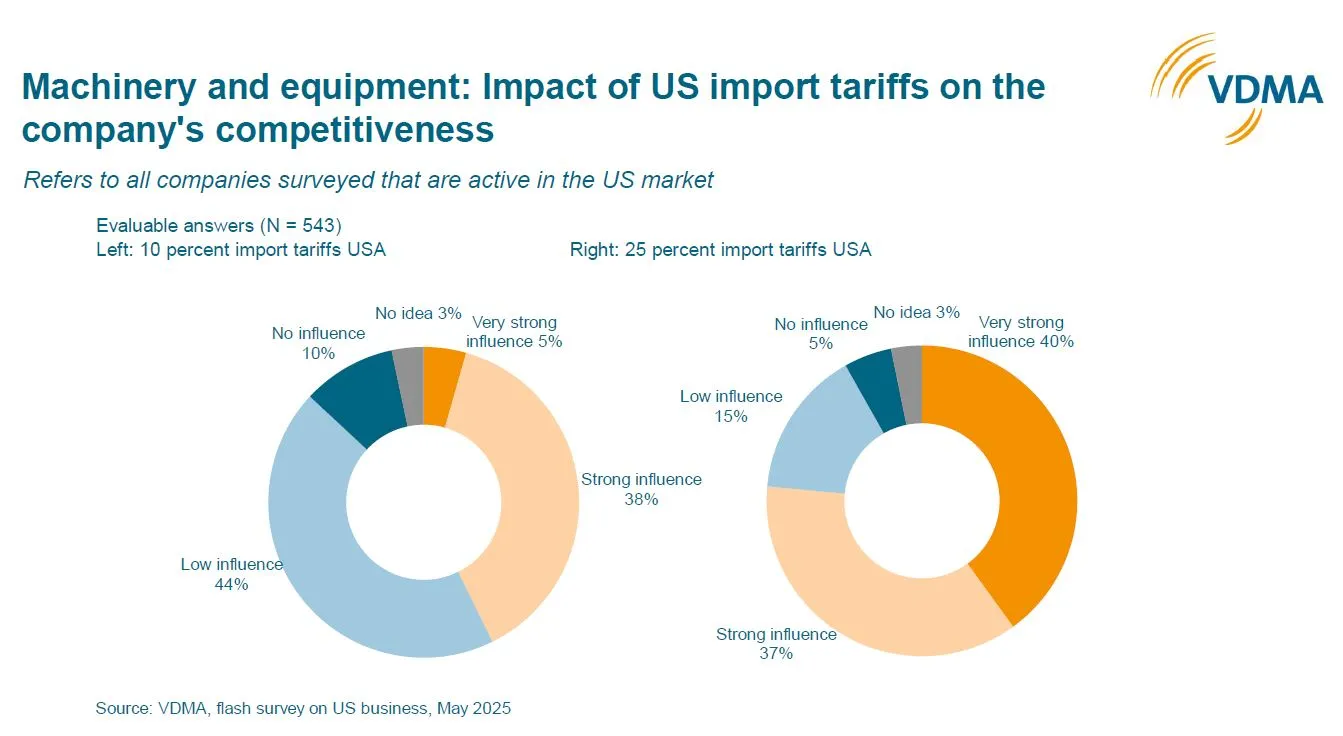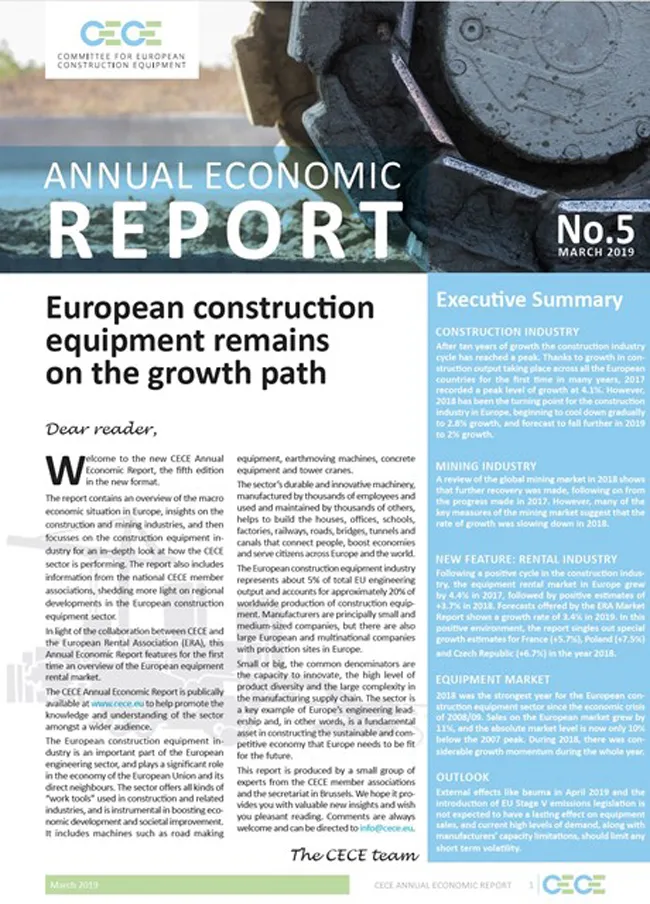Steady financial performance is claimed for the German equipment producers in 2012, according to the manufacturing association VDMA. The German construction equipment and building material machinery industry generated €12.5 billion in turnover during 2012 according to the latest results. Of this, construction equipment accounted for €7.9 billion, while €4.6 billion of business came from the building material, glass and ceramics machinery sector. This is a nominal decrease of around 1% compared to 2011. Afte
February 14, 2013
Read time: 4 mins
Steady financial performance is claimed for the German equipment producers in 2012, according to the manufacturing association 1331 VDMA. The German construction equipment and building material machinery industry generated €12.5 billion in turnover during 2012 according to the latest results. Of this, construction equipment accounted for €7.9 billion, while €4.6 billion of business came from the building material, glass and ceramics machinery sector. This is a nominal decrease of around 1% compared to 2011. After having seen an upturn following the 2009 economic and financial crises, the industry is now moving sideways on this decent level it managed to also achieve again in 2012. “Although, on the whole, times are difficult, last year was a good year for our industry”, said Johann Sailer, chairman of the industry association.
He predicted that 2013 will not see any peaks. However, companies belonging to the industry are currently full of confidence in light of688 Bauma, the industry’s international leading fair, which will take place in Munich from April 15-21, 2013. “This event, which takes place every three years, in itself has always inspired new business opportunities. It also is the number one indicator for upcoming market trends”. Taking a look at this year’s figures, though, the first couple of weeks have been rather reluctant so far. The number of orders which came in the fourth quarter 2012 do not yet indicate any growth. An increase of demand is most likely to be seen in the second half of the current year, so that the good level of the previous year should also be reached in 2013 once again.
The VDMA is fully aware of the importance of the Chinese market and how its performance will affect global trade. In 2012, the domestic market on construction machinery saw a decline of 30%. According to experts at Off-Highway-Research, in 2012, mobile construction machinery worth US$100 billion was sold worldwide. Nearly $30 billion of the machines were sold on the Chinese market alone, nearly $22 billion in North America and only $12 billion in Europe. As with the automotive industry, China has become an important factor for the production and sales of construction machinery. At the moment, the country is facing financing problems and surplus capacities on its domestic market. Experts believe China to have overcome this situation within the next 18 months. In the long-run, this country will be and remain the major market for construction machinery.
But the discrepancy between the markets in North and South Europe keeps getting bigger and the VDMA Believes that it is impossible to predict when the construction industries of Spain, Portugal and Greece will finally pick up again. Germany has been and probably will remain stable in this regard. It seems most likely that growth will rather be generated in less traditional markets. In countries such as Indonesia, Myanmar, some states of Southern Africa or even Mongolia there are lots of raw materials ready to be extracted and those countries’ requirements in improving their infrastructure are enormous.
Indonesia’s economic data is impressive: A gross domestic product of $840 billion (2011), the third quickest growing economy of Asia and one of the 20 largest national economies in the world. In 2011, the Indonesian economy grew by 6.5%; for 2012 another growth of nearly 7% is expected. The construction industry represents 10.2% of the country’s economic strength and is therefore the fifth most important sector of the country. Sales of construction machinery grew significantly over the past couple of years; in 2007 nearly 7,500 heavy earth-moving machines were sold, while 2011 already saw a demand of 20,000 units. Mid-term, also the raw material sector will call for big investments. By 2025, the country will have been implementing its Master Plan for the Acceleration and Expansion of the Economic Development (MP3EI). A budget of nearly $400 billion is allocated to this plan, with nearly half of this sum to be invested in infrastructure projects. In total, the government identified 21 priority projects worth $33.4 billion, including the construction of toll roads, bridges, harbours or water industry facilities. The demand for building material is also increasing. According to its government, Indonesia required around 48.4 million tonnes of cement, 13.3 million tonnes of steel and 1.3 million tonnes of asphalt concrete in 2012, showing an upward trend for the future.
He predicted that 2013 will not see any peaks. However, companies belonging to the industry are currently full of confidence in light of
The VDMA is fully aware of the importance of the Chinese market and how its performance will affect global trade. In 2012, the domestic market on construction machinery saw a decline of 30%. According to experts at Off-Highway-Research, in 2012, mobile construction machinery worth US$100 billion was sold worldwide. Nearly $30 billion of the machines were sold on the Chinese market alone, nearly $22 billion in North America and only $12 billion in Europe. As with the automotive industry, China has become an important factor for the production and sales of construction machinery. At the moment, the country is facing financing problems and surplus capacities on its domestic market. Experts believe China to have overcome this situation within the next 18 months. In the long-run, this country will be and remain the major market for construction machinery.
But the discrepancy between the markets in North and South Europe keeps getting bigger and the VDMA Believes that it is impossible to predict when the construction industries of Spain, Portugal and Greece will finally pick up again. Germany has been and probably will remain stable in this regard. It seems most likely that growth will rather be generated in less traditional markets. In countries such as Indonesia, Myanmar, some states of Southern Africa or even Mongolia there are lots of raw materials ready to be extracted and those countries’ requirements in improving their infrastructure are enormous.
Indonesia’s economic data is impressive: A gross domestic product of $840 billion (2011), the third quickest growing economy of Asia and one of the 20 largest national economies in the world. In 2011, the Indonesian economy grew by 6.5%; for 2012 another growth of nearly 7% is expected. The construction industry represents 10.2% of the country’s economic strength and is therefore the fifth most important sector of the country. Sales of construction machinery grew significantly over the past couple of years; in 2007 nearly 7,500 heavy earth-moving machines were sold, while 2011 already saw a demand of 20,000 units. Mid-term, also the raw material sector will call for big investments. By 2025, the country will have been implementing its Master Plan for the Acceleration and Expansion of the Economic Development (MP3EI). A budget of nearly $400 billion is allocated to this plan, with nearly half of this sum to be invested in infrastructure projects. In total, the government identified 21 priority projects worth $33.4 billion, including the construction of toll roads, bridges, harbours or water industry facilities. The demand for building material is also increasing. According to its government, Indonesia required around 48.4 million tonnes of cement, 13.3 million tonnes of steel and 1.3 million tonnes of asphalt concrete in 2012, showing an upward trend for the future.







